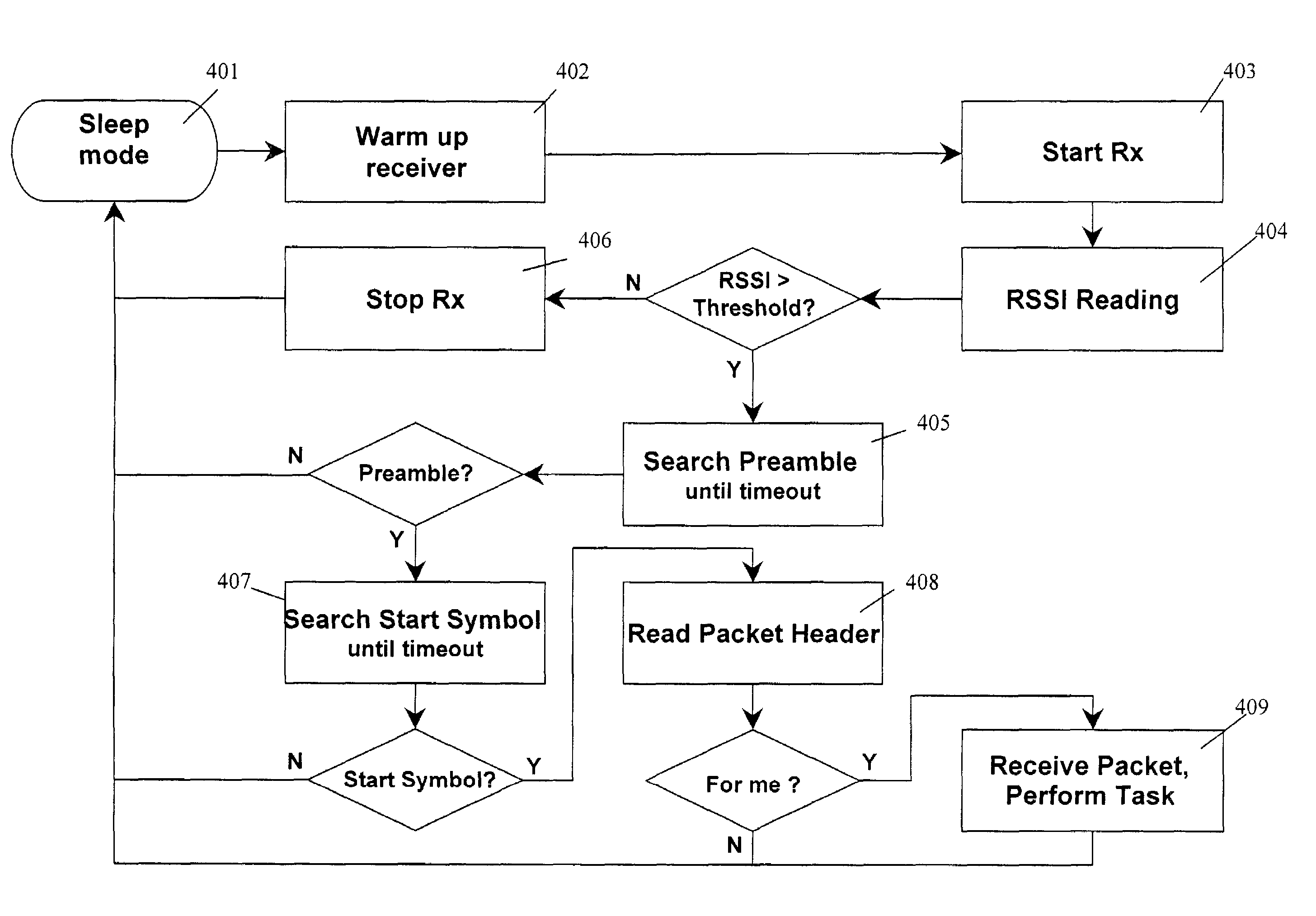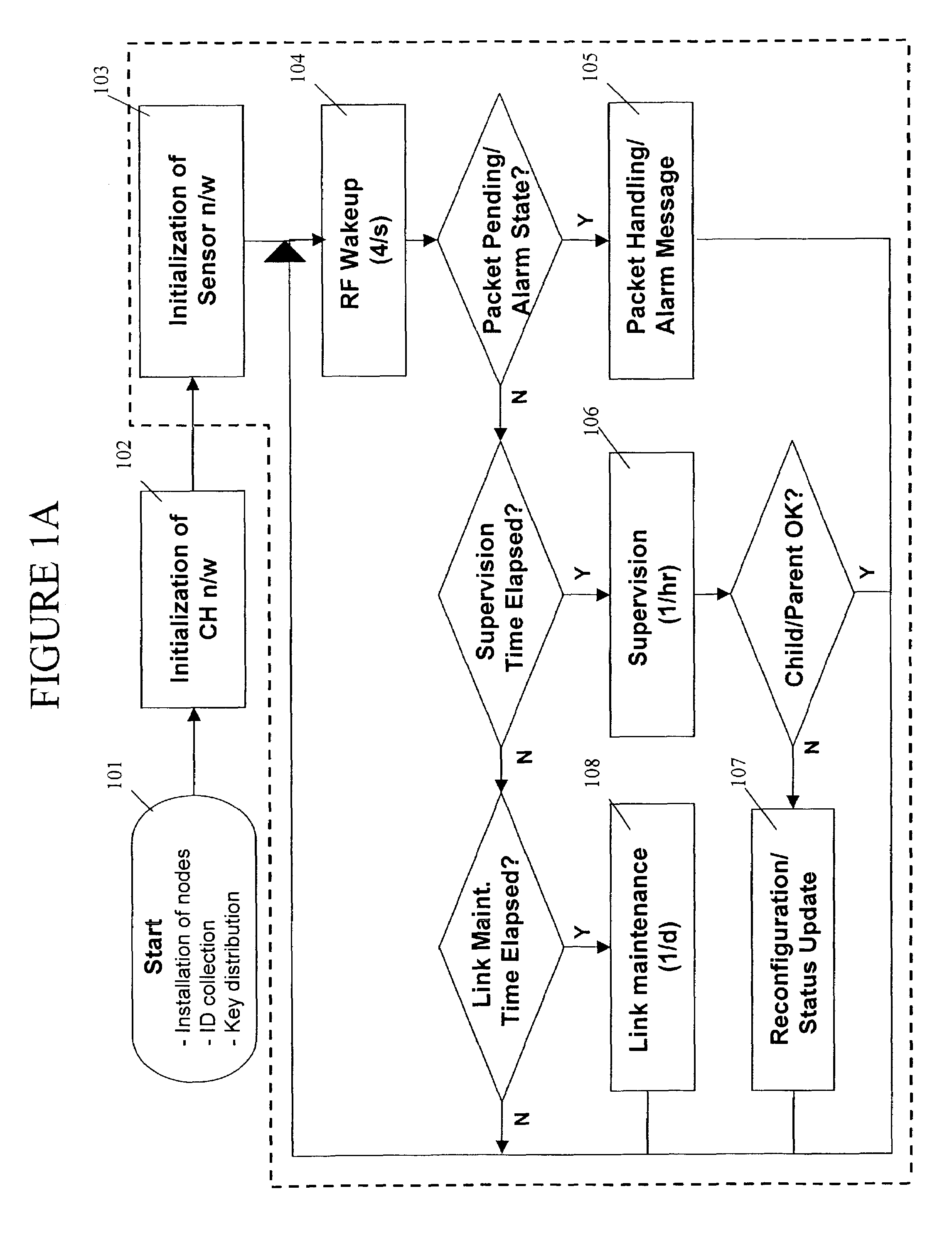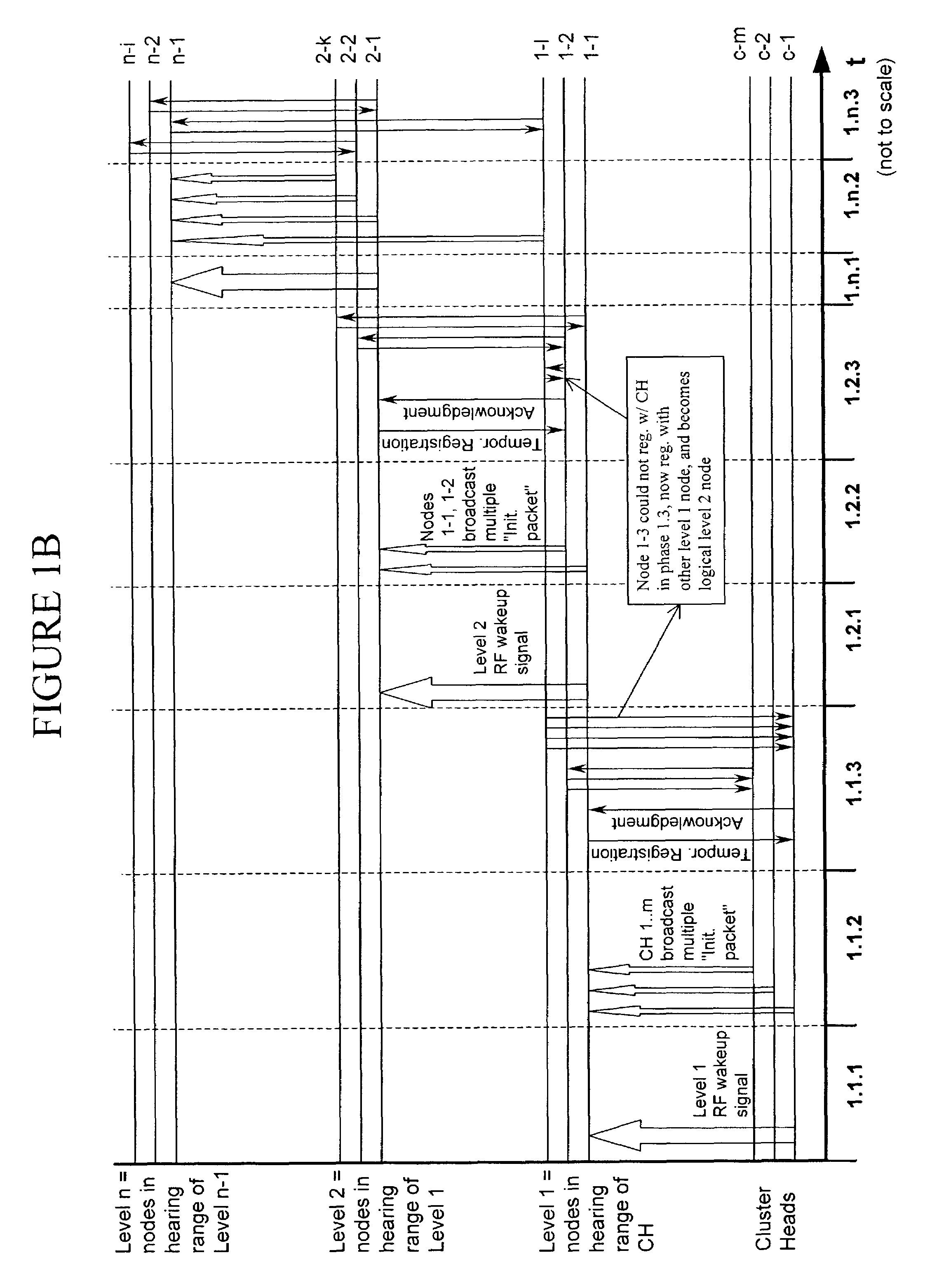Protocol for reliable, self-organizing, low-power wireless network for security and building automation systems
a wireless network and security and building automation technology, applied in data switching networks, power management, high-level techniques, etc., can solve the problems of substantial cost of implementation of such networks, and achieve the effects of low power consumption, low cost, and low overhead
- Summary
- Abstract
- Description
- Claims
- Application Information
AI Technical Summary
Benefits of technology
Problems solved by technology
Method used
Image
Examples
Embodiment Construction
[0015]In the following description, the term “sensor node” may be used to collectively refer to both sensor nodes and actuator nodes. Likewise, the term “sensor node network” may be use to collectively refer to networks consisting of sensors and / or actuators. Communications within the sensor node network may be based on carrier sense multiple access (CSMA) with randomized back-off. Transmitted packets may include a preamble as defined by the physical layer, as well as a start symbol and control bytes, a packet type, a packet length, source and / or destination node identifiers, and a cyclic redundancy check (CRC). Optionally, transmission may be secured via link layer encryption with the exchange of a shared key, and authenticated with a message authentication code (MAC).
[0016]FIG. 1A is a flow chart representing an exemplary protocol method to wirelessly network sensors and / or actuators. In step 101, the network nodes are installed, unique identifiers (IDs) of the nodes are collected...
PUM
 Login to View More
Login to View More Abstract
Description
Claims
Application Information
 Login to View More
Login to View More - R&D
- Intellectual Property
- Life Sciences
- Materials
- Tech Scout
- Unparalleled Data Quality
- Higher Quality Content
- 60% Fewer Hallucinations
Browse by: Latest US Patents, China's latest patents, Technical Efficacy Thesaurus, Application Domain, Technology Topic, Popular Technical Reports.
© 2025 PatSnap. All rights reserved.Legal|Privacy policy|Modern Slavery Act Transparency Statement|Sitemap|About US| Contact US: help@patsnap.com



